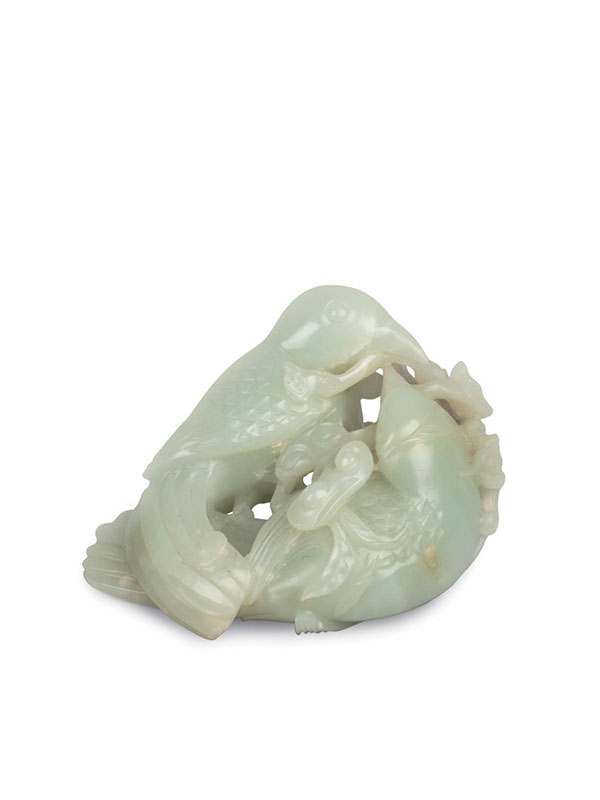Jade group of two magpies
A jade sculpture of two magpies, depicted jointly holding in their beaks blossoming branches of prunus. One of the birds also holds a branch of lingzhi fungus. The birds face each other with their tails entwined and overlapping. Their bulging eyes, feathers and long tails are well defined. The stone is well polished and of palest celadon tone, with some yellowish inclusions around the edge.
To the casual observer this beautifully carved jade sculpture or paperweight of two magpies holding branches of plum blossom and lingzhi fungus might be regarded as a careful study of nature, but in fact the piece is imbued with symbolism. The magpie, known as the ‘bird of happiness’ is a popular motif. Two magpies can be seen especially on the occasion of a wedding and signify ‘double happiness’. The birds’ long tails lead them to be called ‘birds with longevity ribbon’ (shoudainiao).[1] A closely comparable jade group of two birds, holding in their mouths springs of corn and dated to the Song to Yuan dynasty, is in the collection of Mr. and Mrs. Philip Chu and was exhibited at the Hong Kong Museum of Art in 1983.[2] A double magpie jade group, slightly larger in size and dated to the mid Qing dynasty, was formerly in the Qing Court collection and is now in the collection of the Palace Museum, Beijing.[3]
Provenance: private collection, the Netherlands
- Tse Bartholomew, T. Hidden Meanings in Chinese Art, Asian Art Museum, San Francisco, 2006, pp. 50, 52
- Ip, Yee, Chinese Jade Carving, Hong Kong Museum of Art, Hong Kong, 1983, no. 181, p. 200
- Gugong Museum Yuqi (Jadeware), Complete Collection of Treasures Gugong, Volume II, Shangwu yinshuguan, Hong Kong, 1995, no. 82, p. 102


